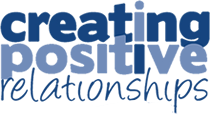6th grade
Students are taught what to expect as they progress through puberty: physical, emotional, social, and mental changes. They learn about the anatomy of the reproductive system, the steps of physical affection, delaying gratification, and the importance of choosing friends who will encourage good decision making. Students learn how STIs are spread and how HIV effects the immune system. Porn is defined, and it is explained that it provides no educational benefit. Students receive a booklet for note taking and they are encouraged to share each day’s lesson with their parent/guardians.
Modules Include:
- Abstinence
- Positive Relationships
- Anatomy
- Development of Reproductive System
- Emotional Needs
- Maturity
- Immediate Gratification
- Decision-Making by Goal Setting
- Love vs Crushes
- Setting Limits
- Abuse
- Possible Physical, Emotional, Mental Consequences of Sexual Involvement
- Basic STI Information
- Social Maturity
- Peer Influence
- Effects of Media
7th grade
Students are taught the importance of respecting self and others, the impact of setting goals and making good decisions. They learn the reality of teen pregnancy. They learn that some decisions can cause them to get off course, making their goals less attainable. Students learn how STIs are spread from person to person and the effectiveness and limitations of condoms. They practice refusal skills in the classroom to help learn how to abstain from risky situations. They learn the dangers of sexting, sextortion and pornography. Students also learn their personal value and the importance of a healthy body image. Students receive a booklet for note taking and they are encouraged to share each day’s lesson with their parents.
Modules include:
- Respect
- Setting and Achieving Goals
- Abstinence
- Decision-Making
- Developing a Plan to Reach Goal
- Developing a Plan to Be Abstinent
- Powerful Bond of Sex
- Possible Consequences of Premarital Sex
- STI Information
- Condom Information
- Setting Limits
- Refusal Skills
- Personal Value and Thoughts on Body Image
- Media Pressures
- Dangers of Sexting and Sextortion
- Spoken and Unspoken Peer Pressure
- Pornography
8th grade
Students are equipped to learn how to succeed in high school. They are guided to assess themselves, so they can stand against the negative influence from society and peers. Students learn to identify when a healthy relationship begins to become unhealthy. The realities of teen pregnancy are discussed, including the financial, emotional, and social implications. Students learn tips for enhancing communication with parents and adult mentors. They learn to identify the people in their life who can help them with problems and they work on a problem-solving tool that will help them as well. Students learn that the benefits of waiting for sexual activity until marriage are numerous and delaying sexual activity until a committed relationship as an adult is the best choice for their overall health. Students receive a booklet for note taking and they are encouraged to share each day’s lesson with their parents.
Modules Include:
- Abstinence/Secondary Abstinence
- Steps of Physical Affection
- Personal Values and Beliefs
- Unhealthy/Healthy Relationships
- The Power of Groups
- Recognition of Peer Influence
- Types/Symptoms of STIs
- Parental Responsibilities and Qualities
- Consequences of Teen Pregnancies and STIs
- Communication With Parents
- Adult Mentors
- Problem-Solving
- Decision Making
- Recognize Strengths and Abilities
- Setting Boundaries to Avoid Peer Pressure
High School
High school students are challenged to think critically about the decisions that could affect their future. They are shown the importance of taking the time to get to know someone before trusting him/her. We cover the five components of a healthy relationship: Character, Compatibility, Chemistry, Commitment, and Communication. We discuss the importance of looking for healthy or unhealthy patterns in behavior. We have students develop their own compatibility chart to see the qualities they are looking for in a future spouse. STI information is detailed, including pictures on a power point. Communication skills are observed to see the best way to resolve an argument. Every student receives a booklet for note taking, with additional information on each topic, including ideas for creative dates.
Modules Include:
- Secondary Abstinence
- Defining 5 Components of a Healthy Relationship
- Definition of Sexual Activity
- Healthy Versus Unhealthy Relationships
- Character Development, Relationship Attachment Model
- Definition of Safe Zone
- Definition of Relationship Chemistry
- Compatibility Discussions and Test
- STI Information
- Condom Information
- Definition and Determination of Character
- Abusive Relationships Red Flags
- Date Rape
- Characteristics of Responsible Dating
- Creative Dating Ideas
- Effective Communication Skills
- Commitment in Relationships
Single Adults
Choosing Healthy Lives for Singles challenges adults to think about decisions that could affect their future. They are shown the importance of taking time to get to know someone before trusting them. Different levels of commitment and physical touch are explained. Strong emotional attachments can make it difficult to see unhealthy patterns in behavior. The lessons show how to use the head as well as the heart in romantic relationships. Participants develop their own compatibility chart to determine qualities they are looking for in a future spouse. They continue to interact through a gambling game where possible consequences of sexual activity outside of a committed permanent relationship are discussed. Communication skills are practiced to see the best way to resolve an argument. Every participant is provided a booklet for note taking, with additional information on each topic, including ideas for creative dates.
